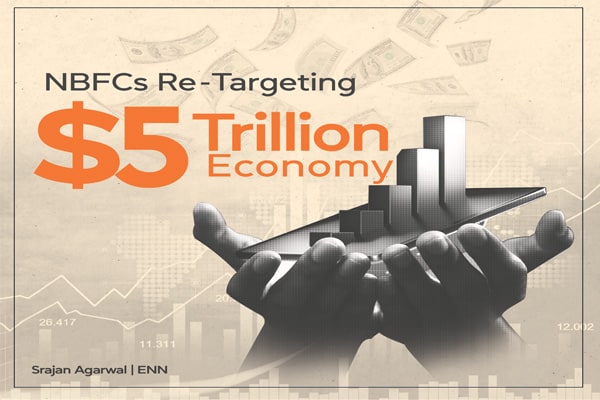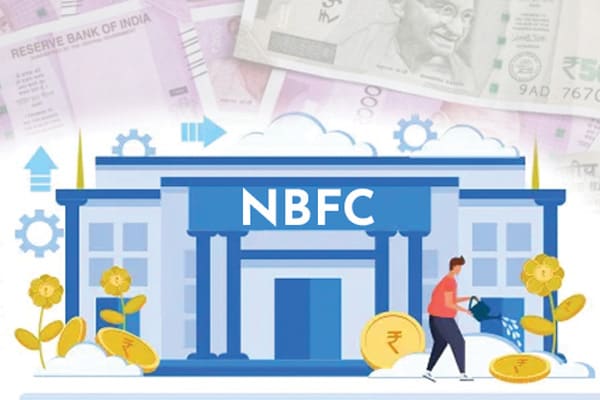Prime Minister Narendra Modi foresaw India being a worldwide powerhouse with a $5 trillion economy by 2028- 29. With this, India would become the world’s third-largest economy, with every financial company driving the shift.
Despite the fact that all industries have contributed to India’s prosperity over the last decade, financial technology has a big impact on accomplishing the aim. The sector’s persistent use of automation is also a major contributor towards the growth of India.
India’s digital journey is a unique kind of development that the populace has seen in the last decade. The journey began with the Digital India campaign in 2015, which attempted to encourage greater financial inclusion.
Taking a step forward
Industry is aiming for a $5 trillion economy before the end of 2030. To achieve so, it is mandatory to grow at a nominal rate of more than 12 per cent per year. Although, this will be difficult to achieve due to inflation, sluggish investment, and trade tensions at global level between the biggest economies of the world.
The Confederation of Indian Industry (CII) has proposed four critical measures to increase liquidity for Non-Banking Financial Companies (NBFCs) and Housing Finance Companies (HFCs) in order to boost demand in the economy immediately.
NBFCs and HFCs have complemented banks in providing loans to underserved parts of the economy. According to RBI data, the percentage of credit from banks, NBFCs, and HFCs was 70:30 in FY19. NBFCs account for 15 per cent of personal loans, 30 per cent of vehicle loans, and 42 per cent of home loans, respectively.
CII also elaborated on the significance of the proposed restrictions, stating that NBFCs and HFCs are essential sources of finance and will play a key part in bringing the Indian economy to $5 trillion. NBFCs have mastered the skill of banking the unbanked portion of society in both urban and rural locations throughout the years. The fundamental parts of their success have been a strong grasp of the customer, the local geography, and the current market dynamics across multiple areas, combined with operational flexibility based on the borrower’s needs. To their credit, policymakers have begun taking attempts to address the issues in the NBFC sector. The CII’s recommendations to enhance liquidity in the sector will provide a much-needed boost to demand in the short term.
To attain $5 trillion economy aim
1. Making business and living easier to encourage private investments
Over 1,300 outdated laws have been repealed by the administration in the last four years! It has done away with many antiquated procedures, rules, and regulations. Through a series of reforms, India has risen 65 places in the World Bank’s Ease of Doing Business Index. No other significant country has ever accomplished this feat. India has risen 65 places, but our goal is for India to reach the top 50 in the next two years and the top 25 in the next five years.
2. Urbanisation – a major growth driver
Cities make up less than 5 per cent of the earth’s land mass, but they generate more than 75 per cent of global GDP! As cities are economic growth hubs, urbanisation is critical.
While urbanisation has ceased in America and Europe and has developed in China, it has just recently begun in India.
India should experience more urbanisation in the next five decades than it has in the previous 500 years. While there will be numerous hurdles, India’s rapid growth will require increased urbanisation.
3. Participation of women
Without gender equity, India cannot grow at a rapid pace over a three-decade span. In India, only 26 per cent of women work, while the global average is 48 per cent. If such a large proportion of the population is not working and we deliberately do not place women in positions of authority, India will struggle to grow.
4. Agriculture reforms
Long-term growth is impossible without massive structural reforms in the agriculture sector, which employs about 60 pe cent of India’s workforce. You can’t keep growing on subsidies, and you can’t keep giving farmers aid without securing stronger markets, putting technology in place, contract farming, and so on. Reforms in the agriculture sector are crucial.
Challenges on the way to re-targeting the $5 trillion economy for NBFCs
To achieve such an aspirational growth target, all economic growth levers must be pulled—investment, consumption, exports, and across the three agricultural, industrial, and service sectors. To reach the Prime Minister’s goal of becoming a $5 trillion economy by 2024-25, India must maintain an 8 percent real GDP growth rate.
The first thing is the depressing pace of infrastructure development over the last decade: The government expects Rs 100 L crore in infrastructure spending over the next five years, or Rs 20 L crore per year on average.
Excessive government intervention in business. The government continues to be a majority shareholder and active involvement in several organisations, including banks, airlines, and infrastructure companies. It owns 70 per cent of the banking industry.
The unpredictability of global economies, such as a trade war between China and the United States, will have an impact on the exchange rate, making it even more difficult for the economy to achieve the 5 trillion amount.
Industry perspective
Dhruv Verma, Founder & CEO, Thriwe, talked about empowering NBFCs and banks to get more digital towards customers. He also stated that one of the key things we are looking at right now, is how to create a unified platform where the customer starts interacting on a singular platform and can get service from that platform itself.
“In about 5 years from now, it will no longer be about only acquiring customers but it will be more about how you are managing your existing clientele. Today, we focus on the mass segment and work with a lot of white good companies along with the NBFCs, and we are going to touch about 35 to 40 million customers in India,” he concluded.
Ashish Agrawal, Director, Resurgent India Ltd, said that we have a lot of NBFCs, rating agencies, and Fintech companies as our clients. So, for NBFC, we think money is a raw material, as money is in equity and debt form, and we help on both sides.
From the regulation point of view, RBI understood that the NBFCs are growing at a rapid pace and have become very large. So, NBFCs have the idea to regulate on the same level of playing field where either bank or NBFC should have the same kind of regulation so that there should not be any surprise happening in the past in ILFS or DHL, he stated.
He also mentioned that there are three parts of any lending; one is pre-sanction; another is sanction underwriting, and the third is collection and monitoring. So, if you see the NBFCs are good in pre-sanction, underwriting and the collection also, then the challenges of the banks are that they are having a lot of money but they are not in a position to deploy this money to the ultimate borrower, as they have their own set of rules. Thus, RBI came up with a co-lending system where the banks and the NBFCs will join together, as NBFCs have the strength of onboarding the customer through digital mode.
NBFCs boosting the MSME Sector
NBFCs have identified many ways to increase revenue through generating new income streams, increasing sales from existing revenue streams, and utilising alliances/partnerships to reach a new customer base.
NBFCs are boosting their penetration in the MSME category by using new and dynamic operating models to target individual buyers, merchants, and suppliers in order to grow quickly in the e-commerce industry.
According to the economic survey 2021-22, credit growth of NBFCs continued to remain sluggish in 2021-22 so far. The total credit of the NBFC sector increased marginally, from 27.53 lakh crore in March 2021 to 28.03 lakh crore in September 2021. The credit intensity of NBFCs, measured by NBFC credit as a ratio of GDP, has been rising consistently and stood at 13.7 at end March 2021.
Concentrating on the MSME market
The Union MSME Ministry of India has revealed that the government is working on building a marketplace platform for MSMEs (dubbed Bharat Craft), which is estimated to generate over INR 10 lakh crore in revenue over the next 2-3 years. EXisting private B2B platforms have a significant seller base from a variety of industries.
NBFCs should prioritise preparing for this environment by establishing capacities to attract market participants. Among the capabilities are:
1. Personalised campaigns: MSME segment identification for targeted product campaigns, supplemented by real-time offers for MSMEs via the marketplace platform, to maximise marketing ROI.
2. Real-time data management: Real- time access to MSME data from various market/government sources to determine eligibility for pre-approved loans, user-friendly interfaces for MSMEs to apply for loans, dashboards/ scorecards to monitor daily transactions, and end-of-day reports for account reconciliations.
3. Helpdesk assistance: A combination of self-service and supported channels to resolve loan terms and conditions queries and ensure minimal dropouts during the loan processing/ disbursement process.
4. Technology capability: Ensuring that technology architecture is adaptable enough to handle integration with marketplace ecosystem partners for smooth onboarding and payment disbursements.
Collaborations with e-commerce players
From $39 billion in 2017 to $200 billion by 2027, the e-commerce market is predicted to develop at an 18 per cent CAGR. Gen-Y shoppers have a significant desire for real- time online credit, particularly for mid- to high-ticket items.
With their unique analytics-driven underwriting procedures, digital-first players have effectively leveraged e-commerce platforms by offering rapid credit.
Furthermore, several of the biggest banks offering zero-cost EMIs have acquired a large market position in this area, with EMIs accounting for a growing proportion of gross merchandise sales on e-commerce platforms.
Choosing merchants/suppliers
E-commerce platforms allow you to target registered sellers/merchants and intermediaries for working cash needs. Leading digital-first NBFCs have been able to grant non-collateralised loans by evaluating operating history, amount of transactions, registration details, and tax filings using merchant data from multiple sources (income tax, bank statements, credit bureau).
Conclusion
NBFCs have already risen from the ashes, as witnessed by the 2008 and 2014 financial crises. However, there are extra issues this time. The first is the evident domestic economic slowdown, notably in the automotive, infrastructure, and real estate sectors, where NBFCs have a substantial focus.
India is actively attempting to achieve the position of $5.0 trillion economy.
Agriculture provides $400 billion to India’s economy, which ranks second only to China. To meet this massive national goal, all sectors of the economy, including agriculture, manufacturing, and services, must perform admirably. To meet this goal, our overall export should be $1.0 trillion per year, with agriculture and the allied industry accounting for 10 per cent of total exports. Smart agriculture is critical to achieving $100 million in agri- exports and sustaining our products at the international level. Agritech startups can play an important part in this endeavour; nevertheless, the bottleneck should be addressed as soon as possible.
Finally, the capacity of NBFCs to form strategic alliances with important ecosystem participants and harness technology to satisfy the needs of new consumers will decide the industry’s future direction.
Elets The Banking and Finance Post Magazine has carved out a niche for itself in the crowded market with exclusive & unique content. Get in-depth insights on trend-setting innovations & transformation in the BFSI sector. Best offers for Print + Digital issues! Subscribe here➔ www.eletsonline.com/subscription/






















